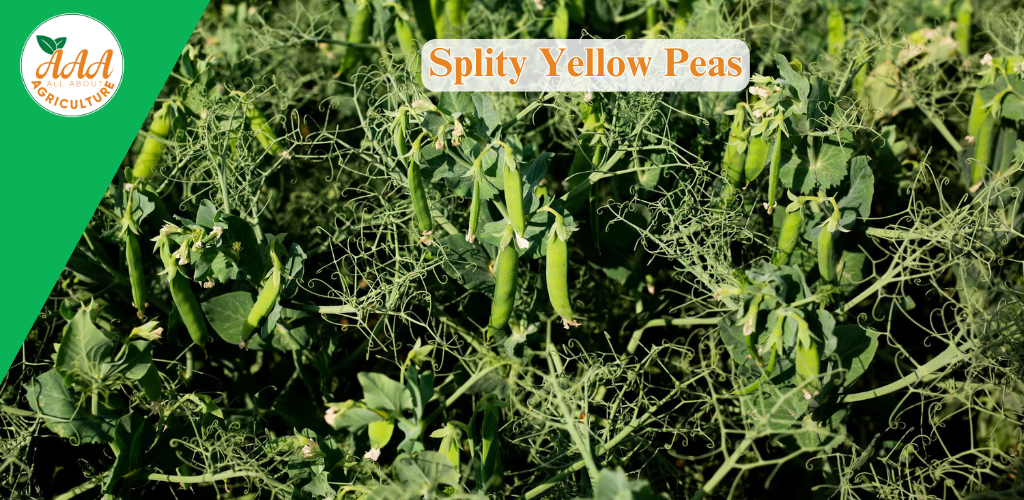Splity Yellow Peas (Pisum sativum)
Splity Yellow Peas (Pisum sativum)

Splity Yellow Peas, a variety of green peas, are one of the most important legumes in global agriculture. They are especially popular for their high protein content, nutritional value, and versatility in culinary use. Yellow peas are widely used in soups, dal, and snacks and are also processed into pea protein for health food products.
Production of Splity Yellow Peas in India
India is the largest producer of splity yellow peas globally, contributing to the majority of world production.
Top Producing States: Major producing states in India include Madhya Pradesh, Maharashtra, Uttar Pradesh, and Rajasthan.
India’s Rank: India ranks first globally in the production of yellow peas, significantly contributing to its domestic consumption and export markets.
Temperature and Growing Conditions for Splity Yellow Peas
Temperature: Splity yellow peas grow best in cool climates, with an ideal temperature range of 15°C to 25°C (59°F to 77°F). This makes them perfect for regions with mild winters and cool spring.
Rainfall: Yellow peas require moderate rainfall ranging between 400mm to 600mm annually. However, they are drought-tolerant once established, making them well-suited for dryland farming systems.
Soil Type: Yellow peas prefer well-drained loamy soils with a neutral to slightly alkaline pH. The soil must be rich in organic matter to support healthy growth.
Ideal Growing Conditions
Planting Time: Splity yellow peas are typically planted in early winter, around November to December, depending on the region. The planting should coincide with the onset of cool weather.
Harvesting Time: The crop is generally harvested in late spring to early summer (March to May), after around 3 to 4 months of growth.
Key Benefits of Splity Yellow Peas
- Rich Source of Protein: Yellow peas are one of the best plant-based sources of protein and fiber, making them a staple for vegetarians, vegans, and health-conscious individuals.
- Heart–Healthy: Yellow peas are rich in soluble fiber, which helps in reducing cholesterol and promoting heart health.
- Blood Sugar Management: The low glycemic index of yellow peas helps in controlling blood sugar levels, making them beneficial for people with diabetes.
- Digestive Health: The high fiber content aids in digestive health by promoting regular bowel movements and preventing constipation.
Economic and Culinary Importance
Major Crop for Farmers: Splity yellow peas are a cash crop for farmers in India, offering a sustainable option for rotational cropping and soil improvement.
Versatile Use: They are widely used in Indian cuisine for preparing soups, dals, snacks, and pasta. The peas are also ground into flour or made into pea protein isolates for health products.
Global Demand: Yellow peas are a major export for India, especially to Middle Eastern and European markets where they are used in traditional cooking and as a protein source in various food products.
Sustainable and Environmentally Friendly Crop
Water-Efficient: Yellow peas require significantly less water than crops like rice or wheat, making them an environmentally sustainable choice for water-scarce regions.
Soil Health: As a legume, yellow peas naturally fix nitrogen in the soil, which enhances soil fertility and benefits subsequent crops.
Attractive Facts About Splity Yellow Peas
Nutrient-Dense Superfood: Yellow peas are packed with vitamins, minerals, antioxidants, and proteins, making them a superfood for those looking to boost their immunity and overall health.
Globally Recognized: Yellow peas are not only popular in India, but also in Canada, Russia, and China, making them an essential global pulse crop.
Eco-Friendly Choice: Yellow peas contribute to sustainable agriculture due to their low water requirements and nitrogen-fixing ability, which reduces the need for chemical fertilizers.